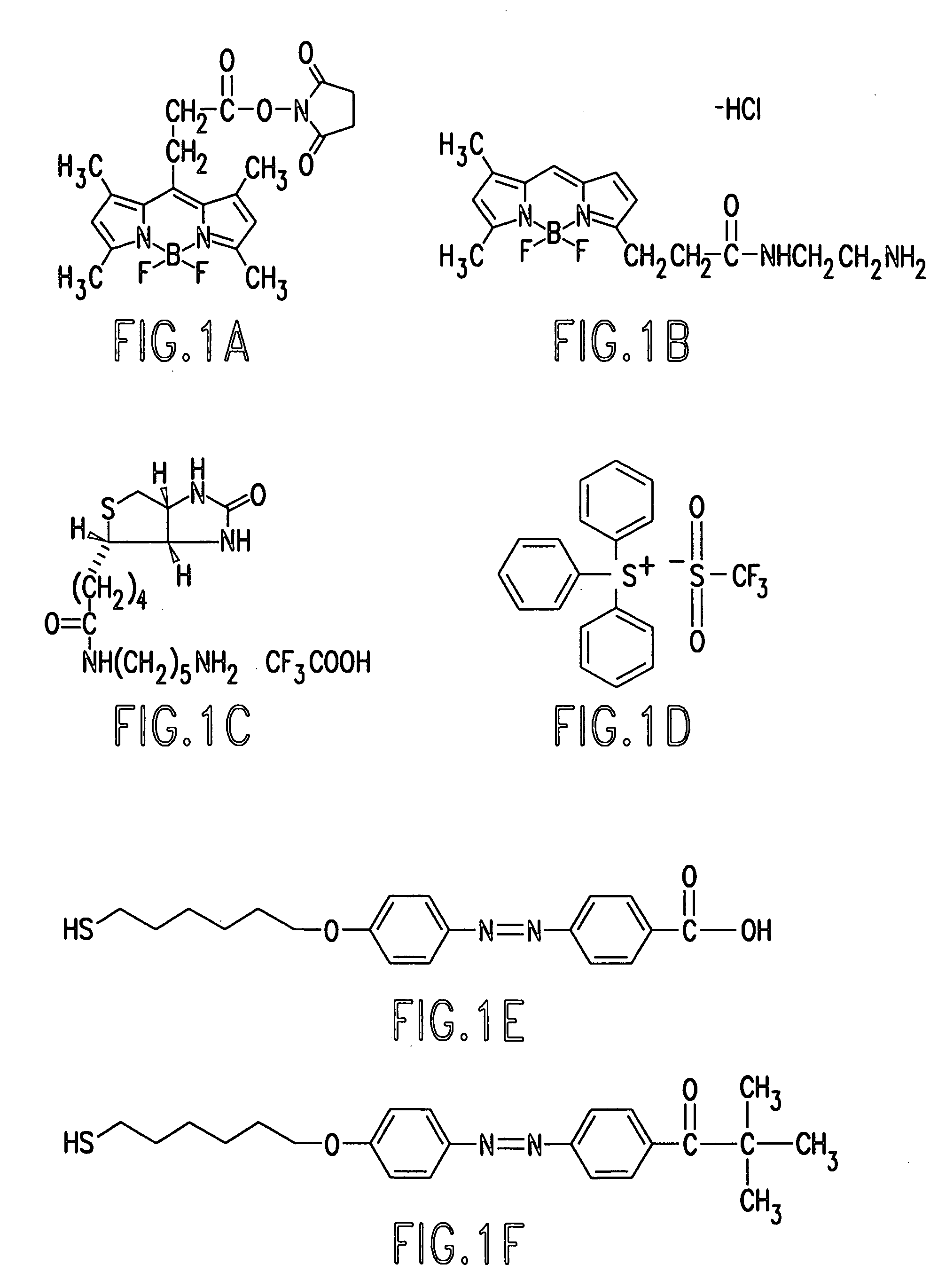Micropatterning of molecular surfaces via selective irradiation
a technology of selective irradiation and molecular surface, which is applied in the direction of photosensitive materials, instruments, photo-taking processes, etc., to achieve the effects of reducing biological activity, negative effect on bioactivity, and great efficiency
- Summary
- Abstract
- Description
- Claims
- Application Information
AI Technical Summary
Benefits of technology
Problems solved by technology
Method used
Image
Examples
examples
[0067] A. Materials:
[0068] All materials and chemicals were used as received from the sources indicated below, unless stated otherwise. Carboxylic acid and t-butyl terminated azobenzene self-assembled monolayers, including SAM-azo-COOH and SAM-azo-tBu, were synthesized in our lab, by preparing the acid and ester according to the sequence shown in FIG. 16 to form the self-assembled monolayer as shown in FIG. 17 so as to obtain a self-assembled monolayer on a nanoparticle substrate having a gold surface. Polystyrene (“PS”) (Molecular Weight=250K) was purchased from Acros Organics Inc. A PtBA-b-PS block copolymer in which the Molecular Weight of both the PTBA portion and the PS portion is 200K (“PtBa(200K)-b-PS(200K)”) was purchased from Polymer Source Inc. ω-triethoxy PS (Molecular Weight=200K) was purchased from Scientific Polymer Inc. Activating agents 1-ethyl-3-(3-dimethylaminopropyl)carbodiimide hydrochloride (“EDC”) and N-hydroxysuccinimide (“NHS”) were purchased from Aldrich. T...
PUM
| Property | Measurement | Unit |
|---|---|---|
| Temperature | aaaaa | aaaaa |
| Temperature | aaaaa | aaaaa |
| Temperature | aaaaa | aaaaa |
Abstract
Description
Claims
Application Information
 Login to View More
Login to View More - R&D
- Intellectual Property
- Life Sciences
- Materials
- Tech Scout
- Unparalleled Data Quality
- Higher Quality Content
- 60% Fewer Hallucinations
Browse by: Latest US Patents, China's latest patents, Technical Efficacy Thesaurus, Application Domain, Technology Topic, Popular Technical Reports.
© 2025 PatSnap. All rights reserved.Legal|Privacy policy|Modern Slavery Act Transparency Statement|Sitemap|About US| Contact US: help@patsnap.com



